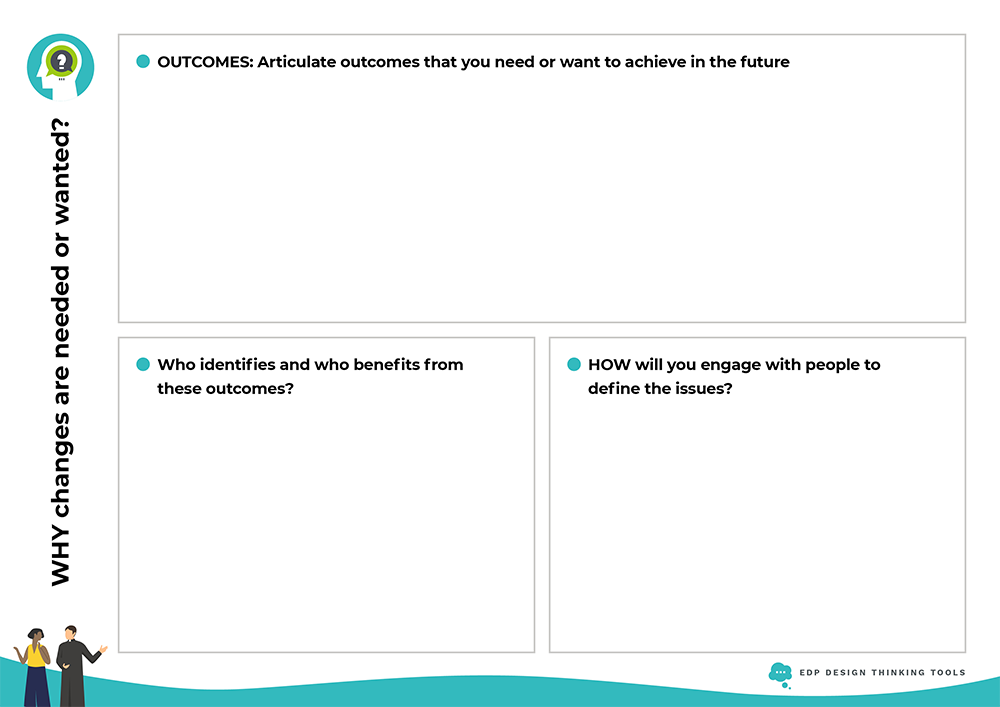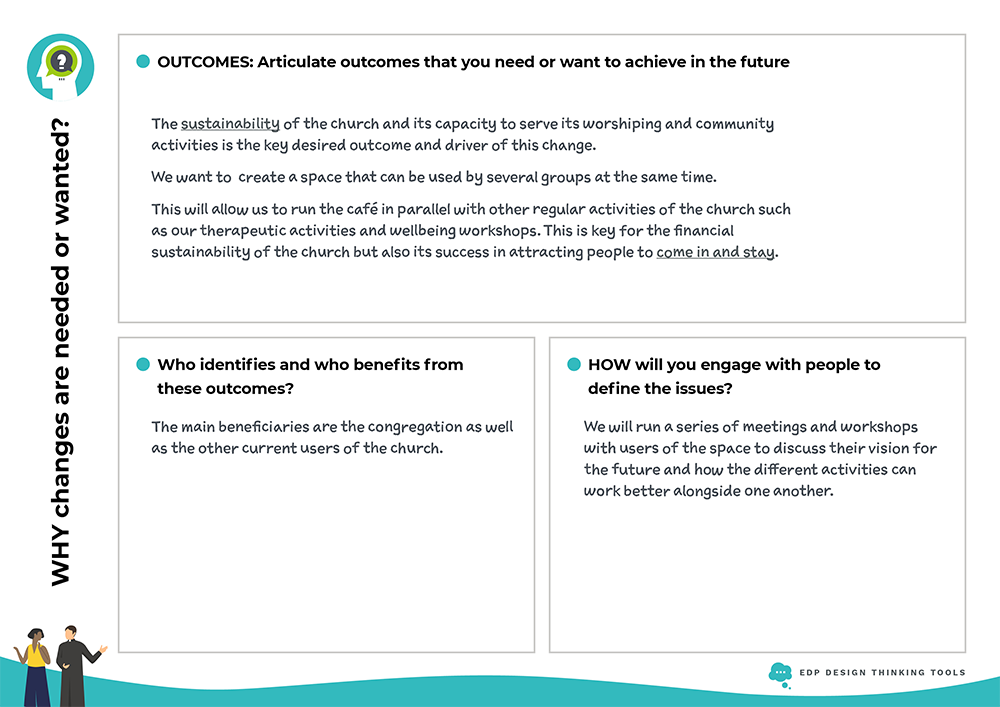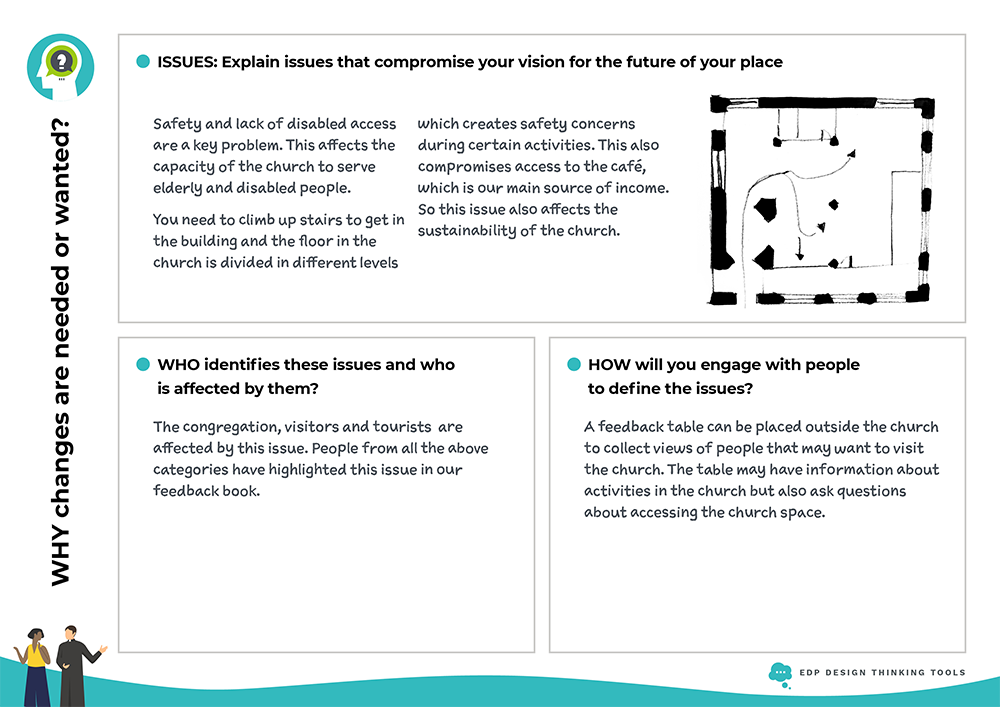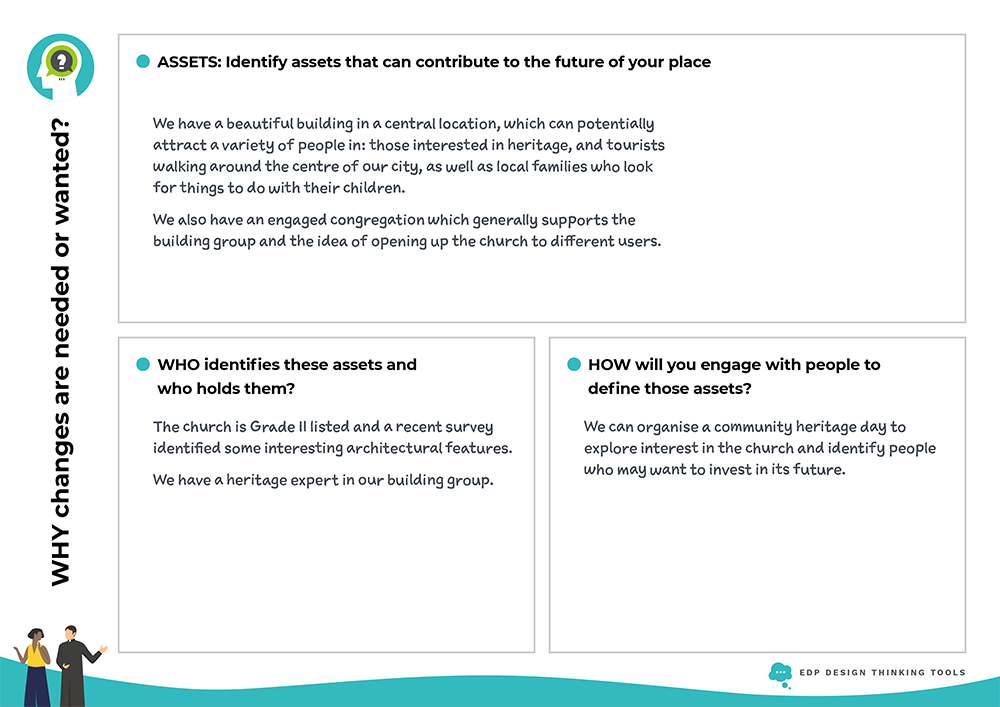Think about why changes are needed or wantedA key step in developing a design rationale is thinking about the reasons that drive change. What are the desired outcomes that set the direction or perspective on what needs to change? For instance, the creation of a more inviting and comfortable place for those using it, or a more vibrant place that responds to different community needs. What might the key issues that compromise these outcomes be? For example limited accessibility for elderly or disabled people, or lack of space to run different activities and so on. The reasons for change might also be about the making the most of the assets that your place or community hold: for example, a historic mural, a beautiful architectural feature, good acoustics, or a set of links and relationships with local organisations and activities. While thinking about the reasons, it is important to think about who needs those changes, who the outcomes are meant for and who can contribute with their knowledge, skills and resources to shaping the future of your place.
|
Tools for thinkingThese templates can be used to record your thinking about why changes are needed or wanted, but also identify the people whose needs and aspirations should be taken into consideration and how you will engage them. There is a different page for issues, assets and outcomes. You may print multiple copies so that you write down only one reason (issue, outcome or asset) per page and have the flexibility to cluster different reasons together.
|
How to use these tools
|
You can use the templates individually or in group conversations. You will need to decide who needs to participate in responding to these questions and how. So, you may organise a meeting or workshop where people will come together to reflect and respond to these questions. It is useful to use the template in a conversation with the key project/building group and your worshiping community. You may also invite other users of the building (e.g. groups running or attending activities in your building) or other members of the wider community. Remember, in some cases you may not have the answers and other activities will be required to collect views, feedback or evidence for your claims.
Your objective in this activity is to create a shared narrative why changes are needed. Ask participants to create some responses (individually or in small groups) and then ask them to negotiate and maybe prioritise the key outcomes, issues and assets. You may also cluster some of the responses. You may use big tables or walls to share and make sense of this tapestry of narratives. |
Click on the images to view examples of how the templates work
|
Resources
|
These are some resources that can help you progress your thinking. Note that some of these resources were developed specifically for churches, but the information should be useful for all faith groups and denominations.
How to identify the issues that you want/need to focus on
How to understand and map the assets that are important for your future
How to identify your desired outcomes/visions
|
Explore the key questions
|
Think about why changes are needed or wanted
|
Think about what changes are needed or wanted
|
Connect why and what to formulate a design rationale
|
Think about who needs to be engaged and how
|









